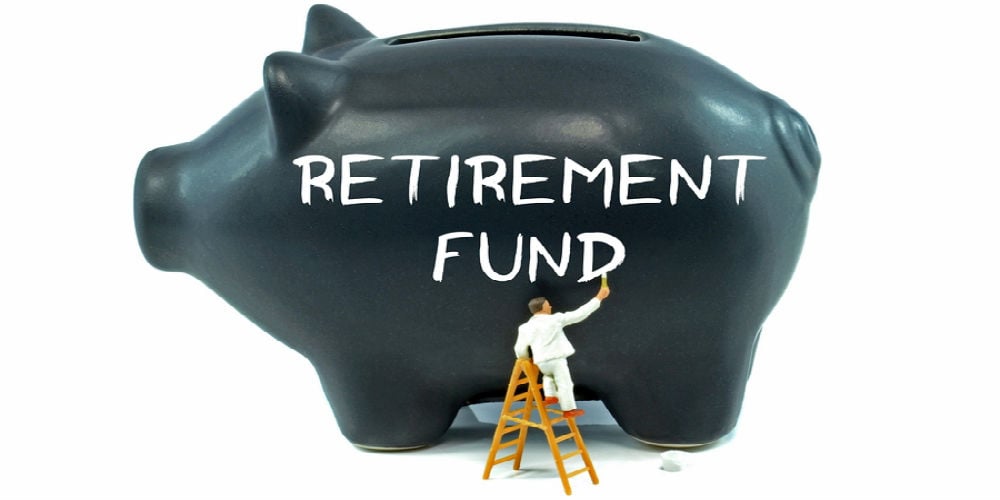Retirement insecurity

Baby Boomers are retiring in droves—with the age 65-and-over population expected to double by 2030—and most of them have little or no retirement savings. Among households ages 55 and older, 52 percent have no retirement savings in a defined contribution plan or IRA. And among households ages 65 and older, Social Security provides most of the household’s retirement income.
These latest findings are highlighted in a U.S. Government Accountability Office (GAO) report prepared for Senator Bernard Sanders (D-VT), Ranking Member of the Subcommittee on Primary Health and Retirement Security, Committee on Health, Education, Labor, and Pensions. The report examines the financial resources of workers approaching retirement and of current retirees. As more Baby Boomers retire, there is growing concern as to the retirement security of this ageing segment of the population—given the sizeable shift from defined benefit plans to defined contribution plans, longer life expectancies, and uncertainty about Social Security’s long-term financial health.
In preparing the report, the GAO reviewed studies of retirement savings adequacy, interviewed experts about retirement readiness, and analyzed household financial data—including retirement and savings income—from the Federal Reserve’s 2013 Survey of Consumer Finances.
Households Ages 55–64
The GAO found that four in ten households ages 55–64 have no retirement savings and few other financial resources. About 55 percent of households ages 55–64 have less than $25,000 in retirement savings, including 41 percent who have no retirement savings. Of the 41 percent with no retirement savings, 85 percent have less than $25,000 in total financial assets, such as savings accounts or non-retirement investments.
Of the six in ten households ages 55–64 that have some retirement savings, the estimated median amount saved is $104,000. Nearly 15 percent of the households have more than $500,000 in retirement savings, 24 percent have less than $25,000, and 11 percent have less than $10,000 in retirement savings. This is equivalent to an insured inflation-protected annuity of $74 per month for a 60-year-old with $25,000 in savings or $310 per month for a 60-year-old with $104,000 in savings.
Households Ages 65–74
The report found that among households ages 65–74, 52 percent have no retirement savings and rely primarily on Social Security for retirement income. Households with no retirement savings and no defined benefit plan assets have few resources to draw on during retirement and have a median net worth of approximately $57,000—one-sixth of the net worth of other households of this age.
Of the 48 percent of households ages 65–74 that have some retirement savings, the estimated median amount saved is $148,000. This is equivalent to an insured inflation-protected annuity of $649 per month for a 70-year-old. About 20 percent of the households have more than $500,000 in retirement savings, while 16 percent have less than $25,000 in retirement savings.
For households ages 65–74, median annual income is about $47,000 and Social Security makes up the largest source of household income. Nearly 90 percent of the households receive some Social Security income, with about 41 percent of these households relying on Social Security for more than half of their income and 14 percent relying on Social Security for more than 90 percent of their income. About one-fifth of household income comes from work and one-fifth comes from defined benefit plans.
Households Ages 75 and Older
The GAO also found that most households ages 75 and older have no retirement savings and rely on Social Security for most of their household retirement income. Among households ages 75 and older, 71 percent have no retirement savings. Of the households that have some retirement savings, the estimated median amount saved is $69,000. This is equivalent to an insured inflation-protected annuity of $467 per month for an 80-year-old.
Median annual income for households ages 75 and older is about $27,000, 61 percent of which is derived from Social Security benefits. Social Security makes up a larger percentage of household income for households ages 75 and older—more than any other age group. About 62 percent of households rely on Social Security for more than half of their income, and 22 percent rely on Social Security for more than 90 percent of their income.
Retirement Security vs. Retirement Insecurity
Will today’s near-retirees be adequately prepared for retirement or will they be empty nesters with no nest egg? Experts agree that retirement security should be measured by a household’s ability to maintain its pre-retirement standard of living into retirement. However, there is no consensus among experts as to how much of a household’s pre-retirement income is needed to maintain the household’s standard of living in retirement.
Many studies show that large numbers of households lack the retirement savings to maintain their pre-retirement standard of living. The Center for Retirement Research at Boston College calculates that 52 percent of households face the risk of not having enough retirement income to maintain their pre-retirement standard of living. And the Employee Benefits Research Institute projects that about 44 percent of households are at risk of having retirement income that is insufficient to cover their minimum expenditures in retirement—with lower-income households facing the greatest risk.
On the other hand, a number of other studies have shown that households are likely to have enough income in retirement to maintain their pre-retirement standard of living. A 2006 study by Scholz, Seshadri, and Khitatrakun finds that only 16 percent of households will have savings below their model predictions for adequate income. A 2012 study by the Investment Company Institute (ICI) also rebuts the argument that households lack adequate retirement savings. The ICI study found that most near-retiree households have some assets in employer-sponsored retirement plans or IRAs. The percentage rises with household income. The ICI concluded that on average, households are able to maintain their pre-retirement standard of living in retirement.
The GAO report makes no specific recommendations, but it highlights the importance of adequate savings for retirement, given the decline in defined benefit plans, longer life expectancies, and the large percentage of retirees relying on Social Security for the bulk of their retirement income. The report provides more evidence that there will be increasing scrutiny on the cost and effectiveness of IRAs and retirement savings tax incentives as Congress prepares for comprehensive tax reform.





